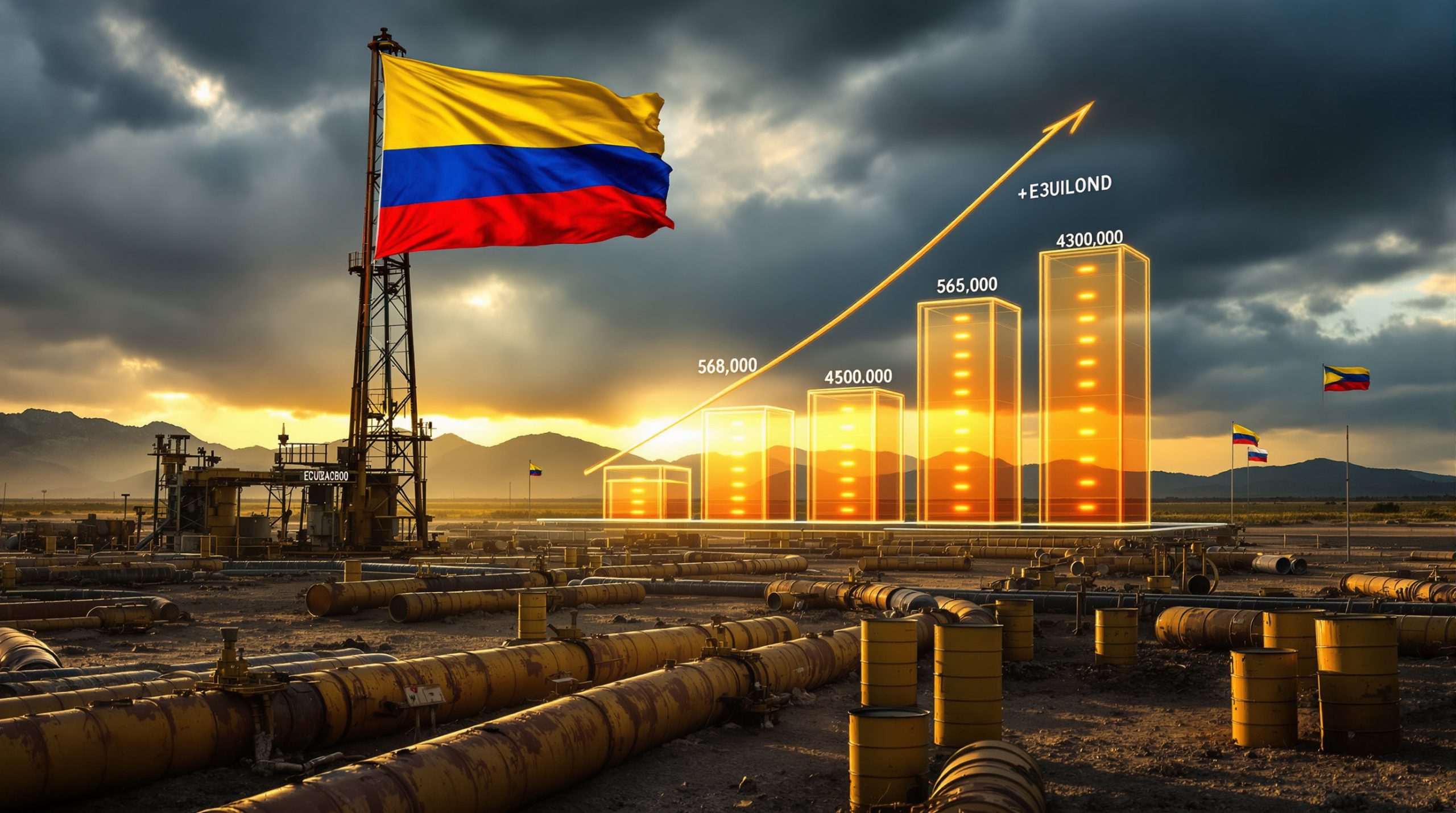Hancock Prospecting has transformed from a traditional iron ore powerhouse into a diversified critical minerals investment vehicle, reflecting Australia's mining sector's recognition of rare earth elements' strategic importance in global supply chains. This evolution positions the company at the forefront of supply chain security discussions and technological advancement initiatives, particularly as Australia develops its critical minerals strategy.
The Scale of Hancock's Rare Earth Investment Portfolio
The company's Hancock Prospecting rare earths investments now represent one of Australia's largest private sector commitments to critical minerals development. Through strategic positions across multiple ASX-listed entities, Hancock has assembled a portfolio spanning rare earth processing, lithium extraction, and integrated mineral production facilities.
This investment strategy demonstrates recognition of Australia's unique position in global critical minerals supply chains. While Australia holds approximately 26% of global lithium resources and 20% of rare earth resources, the country accounts for less than 10% of global rare earth processing capacity, creating significant value-adding opportunities.
Furthermore, these investments align with Australia's broader Critical Minerals Reserve initiative, which aims to secure domestic processing capabilities and reduce dependence on overseas supply chains.
Investment Timeline and Strategic Rationale
Beginning in 2020, Hancock systematically increased its exposure to critical mineral projects, with accelerated activity throughout 2024-2025. This timing aligns with the Australian Government's $2 billion Critical Minerals Facility establishment and growing international demand for supply chain diversification away from Chinese-dominated processing infrastructure.
The strategic rationale extends beyond pure financial returns. Industry analysts emphasise that private sector investment in critical minerals has accelerated due to supply chain vulnerabilities exposed during recent geopolitical tensions, with major mining companies diversifying portfolios to capture value across energy transition and security supply chains.
Which ASX Rare Earth Companies Does Hancock Prospecting Back?
Lynas Rare Earths – The Crown Jewel Investment
Stake Size: 8.2% ownership valued at approximately $1.7 billion
Strategic Importance: Lynas operates as the world's only significant rare earth processor outside China
Hancock's position in Lynas represents its most significant rare earth exposure, with the Mt Weld operation delivering exceptional production capabilities. The company achieved 5,428 tonnes of NdPr production in FY2024, with total rare earth oxide output reaching approximately 13,000 tonnes annually.
| Key Metrics | Performance Data |
|---|---|
| Annual NdPr Production | 5,428 tonnes |
| Total REO Production | ~13,000 tonnes |
| Resource Base | 106.6Mt at 4.12% TREO |
| Global Market Share | 10-12% of demand |
| US Defense Contracts | Up to $120M secured |
The investment has delivered substantial returns, with Hancock's stake value roughly tripling during 2025 as global rare earth demand intensified. According to recent analysis, Lynas's integrated operations, spanning the Mt Weld mine in Western Australia and processing facilities in Malaysia, provide over 20,000 tonnes annual rare earth concentrate processing capacity.
Industry experts highlight Lynas's geographic advantage outside China and established processing infrastructure as strategically valuable for Western supply chain diversification efforts, particularly for defence and high-technology applications. The company's recent $120 million US Department of Defense contract for a Texas-based heavy rare earths separation facility underscores this strategic positioning.
Arafura Rare Earths – The Integrated Processing Play
Stake Size: 9.2% ownership worth approximately $100 million
Unique Value Proposition: Domestic ore-to-oxide processing capability
Arafura's Nolans project represents Australia's most advanced integrated rare earth development, designed to process raw materials into finished oxides domestically rather than exporting concentrate for overseas refinement. This vertical integration strategy appeals to international customers seeking supply chain transparency and ESG certification.
Production Targets:
- Annual NdPr oxide production: 4,440 tonnes
- Project lifespan: 38 years
- Ore Reserves: 56Mt at 2.6% TREO
- Target revenue: $300-500 million USD annually
The project secured significant funding momentum in 2024, including $200 million from Australia's National Reconstruction Fund Corporation and up to $533 million in senior debt facilities from Export Finance Australia. In addition, binding offtake agreements with Hyundai Motor Group and Siemens Energy provide market certainty for substantial production portions.
Mining industry analysts emphasise that integrated processing facilities provide greater margin capture and supply chain transparency compared to concentrate export models, particularly important for customers requiring environmental and social governance certification.
St George Mining – The Brazilian Expansion
Investment Amount: $22.5 million strategic placement
Geographic Diversification: Entry into South American rare earth resources
St George's Araxá project in Brazil provides Hancock with exposure to one of the world's most prospective rare earth regions outside Australia. Brazil contains approximately 21 million tonnes of rare earth reserves, ranking among the top five globally according to US Geological Survey data.
The Araxá region has historical rare earth production significance, with recent exploration activities confirming substantial mineralisation potential. This investment represents Hancock's geographic diversification strategy, reducing concentration risk while accessing high-grade rare earth deposits in established mining jurisdictions.
How Does Hancock's Lithium Strategy Complement Rare Earth Investments?
Liontown Resources – Spodumene Production Leadership
Strategic Context: Kathleen Valley represents one of Australia's largest hard-rock lithium operations
Production Capacity: 500,000+ tonnes spodumene concentrate annually
Despite challenging lithium market conditions, with prices declining approximately 80% from 2022 peaks, Hancock maintained its Liontown position through the project's commissioning phase. This demonstrates confidence in long-term lithium demand recovery, particularly from electric vehicle sector growth and lithium industry innovations.
Kathleen Valley achieved first production in Q3 2024, with continuing ramp-up activities. The project holds Mineral Resources of 156Mt at 1.4% lithium oxide, supporting a 23-year mine life. Stage 1 operations target 500,000 tonnes per annum of 6% lithium oxide spodumene concentrate.
The investment occurred during significant market speculation about potential takeover activity, though ultimately Hancock maintained its strategic shareholding rather than pursuing full acquisition. However, Liontown's $316 million capital raising in mid-2024 strengthened the balance sheet amid lower lithium pricing environments.
Vulcan Energy – Zero-Carbon Lithium Innovation
Investment Structure: €12.5 million participation in €40 million raising
Technology Focus: Geothermal brine extraction with renewable energy processing
Vulcan's European operations offer Hancock exposure to premium-priced, environmentally sustainable lithium production. The Lionheart project targets 24,000 tonnes annual lithium hydroxide capacity, sufficient for 500,000 battery electric vehicles annually.
The company's Direct Lithium Extraction technology extracts lithium from geothermal brines in Germany's Upper Rhine Valley while utilising geothermal heat for renewable energy generation. This process targets less than 1 tonne CO₂ equivalent per tonne of lithium hydroxide, compared to 10-15 tonnes CO₂e/t LiOH from traditional hard-rock sources.
Vulcan secured binding offtake agreements with major European manufacturers including:
- Stellantis
- Renault Group
- Volkswagen Group
- LG Energy Solution
The European Union's Battery Regulation requiring carbon footprint declarations creates potential pricing premiums for low-carbon lithium, positioning Vulcan advantageously in premium market segments.
Delta Lithium – Early-Stage Exploration Potential
Ownership Level: Over 10% strategic holding
Resource Base: Combined 36.5Mt lithium resources across multiple projects
Delta provides Hancock with exposure to Western Australia's emerging Upper Gascoyne Lithium Province, featuring lithium-caesium-tantalum type pegmatite geology considered highly prospective by the Geological Survey of Western Australia.
The company's key assets include:
- Yinnetharra Project: 21.9Mt at 1.0% lithium oxide and 102ppm tantalum
- Mt Ida Project: 14.6Mt at 1.2% lithium oxide and 198ppm tantalum
Furthermore, tantalum co-product potential adds additional value streams, with tantalum commanding premium pricing for electronics and aerospace applications. The Upper Gascoyne region has attracted multiple exploration companies, indicating significant geological prospectivity for additional lithium discoveries.
What Drives Hancock Prospecting's Focus on Critical Minerals?
Supply Chain Security Considerations
Australia produces approximately 46% of global lithium mine supply but accounts for less than 5% of lithium chemical refining capacity. Similarly, Australia contributes 8-10% of global rare earth mine production but less than 2% of separation and processing capacity.
China controls approximately 87% of global rare earth refining capacity and 60% of lithium chemical processing capacity, creating single-country processing vulnerabilities for critical technologies including electric vehicles, wind turbines, and defence systems.
Energy security experts emphasise that supply chain diversification represents a national security priority for Western nations, with processing capacity development considered essential for technological sovereignty. Consequently, Hancock Prospecting rare earths investments target this processing gap, supporting domestic value-adding initiatives.
Government Policy Alignment
The Australian Government's Critical Minerals Strategy provides favourable investment conditions through various support mechanisms. Hancock's portfolio companies have collectively secured over $1 billion in government support and loan facilities, including:
- National Reconstruction Fund Corporation financing
- Export Finance Australia debt facilities
- Critical Minerals Facility support
- State-level development incentives
This policy alignment creates synergistic opportunities between private sector investment and government strategic objectives, reducing development risks while enhancing project viability.
Technological Megatrends
Global rare earth demand projections indicate 400-700% increases by 2030, driven by renewable energy infrastructure expansion, electric vehicle adoption acceleration, and defence application growth. Lithium demand forecasts suggest 3-4x increases by 2030 despite current oversupply conditions, significantly impacting the battery metals landscape.
Key demand drivers include:
- Wind turbine permanent magnet requirements
- Electric vehicle motor and battery applications
- Energy storage system deployment
- Defence and aerospace technologies
- Consumer electronics miniaturisation
Hancock's diversified approach captures multiple demand vectors across this growth trajectory, providing portfolio resilience against single-commodity price volatility.
How Do These Investments Position Australia in Global Critical Mineral Markets?
Breaking Chinese Market Dominance
China's 85% control of global rare earth processing capacity represents significant supply chain concentration risk for Western economies. Hancock Prospecting rare earths investments support projects that could collectively process over 50,000 tonnes of rare earth products annually, representing meaningful supply diversification.
Australian domestic processing development addresses critical vulnerabilities in technology supply chains, reducing dependence on geopolitically sensitive processing infrastructure while capturing additional value-adding opportunities.
Strategic Partnership Development
Several Hancock portfolio companies secured international partnership agreements, demonstrating market confidence in Australian critical mineral production capabilities:
- US Department of Defense contracts for secure rare earth supply
- European automotive manufacturer agreements for battery materials
- Japanese technology company partnerships for permanent magnet applications
- Glencore subsidiary offtake arrangements for lithium processing
These partnerships provide market access certainty while establishing Australia as a reliable alternative to Chinese-dominated supply chains.
Domestic Value Chain Development
Rather than traditional concentrate export models, Hancock's investments prioritise companies developing domestic processing capabilities. This strategy potentially creates thousands of high-skilled jobs across regional Australia while capturing maximum value from mineral endowments.
Integrated processing facilities require:
- Advanced metallurgical expertise
- Environmental management capabilities
- Quality control systems
- Technical service provision
- Research and development activities
This knowledge-intensive employment creation contrasts favourably with traditional mining operations focused primarily on raw material extraction.
What Are the Investment Risks and Opportunities?
Market Volatility Challenges
Lithium price declines of approximately 80% from 2022 peaks significantly impacted several portfolio companies, demonstrating commodity market volatility risks. However, rare earth prices remained relatively stable, illustrating diversification benefits of Hancock's multi-commodity approach.
Spodumene concentrate pricing fell from over $7,000 per tonne to under $1,500 per tonne, affecting project economics and development timelines. Nevertheless, despite these challenges, long-term demand fundamentals remain supportive, with electric vehicle adoption continuing globally.
Key Risk Factors:
- Commodity price volatility
- Technology substitution risks
- Regulatory approval complexities
- Capital cost inflation
- Currency exchange rate impacts
Regulatory and Environmental Considerations
Critical mineral projects face increasingly complex approval processes, requiring comprehensive environmental impact assessments and community engagement programs. Hancock's portfolio companies invested heavily in environmental management and social licence maintenance.
Australian regulatory frameworks provide relative certainty compared to many international jurisdictions, though approval timeframes can extend project development schedules. Environmental monitoring and rehabilitation requirements add operational complexity but enhance long-term sustainability.
Long-Term Value Creation Potential
Independent industry analysis suggests that Hancock Prospecting rare earts investments could generate substantial returns over the next decade, assuming successful project development and favourable commodity pricing recovery. Moreover, comprehensive market assessments indicate significant portfolio value appreciation potential.
Value Creation Drivers:
- Processing margin capture
- Supply chain premium pricing
- Strategic partnership development
- Technology advancement integration
- Market share expansion opportunities
The convergence of supply security concerns, environmental requirements, and technological advancement creates multiple value creation pathways beyond traditional commodity price exposure.
Future Outlook for Hancock's Critical Mineral Strategy
Expansion Opportunities
Hancock continues evaluating additional rare earth and lithium opportunities, with particular interest in advanced processing technologies, recycling initiatives, and strategic international partnerships. Circular economy approaches could provide feedstock diversification while addressing environmental concerns.
Strategic Focus Areas:
- Recycling technology development
- Advanced separation processes
- Downstream product manufacturing
- International market expansion
- Technology partnership formation
Integration Synergies
The company's diverse mineral portfolio creates potential synergies between projects, including shared infrastructure utilisation, technical expertise development, and market access coordination. Cross-project learning accelerates development timelines while reducing individual project risks.
For instance, integrated logistics networks could optimise transportation costs, while shared processing facilities might achieve economies of scale unavailable to individual operations.
Market Leadership Positioning
Through strategic investments totalling over $2.5 billion across critical minerals, Hancock established itself as Australia's leading private sector supporter of domestic rare earth and lithium development. This positioning provides advantages in future investment opportunities and partnership negotiations.
Competitive Advantages:
- Portfolio diversification benefits
- Technical expertise accumulation
- Market relationship development
- Capital deployment capability
- Strategic timing optimisation
The combination of financial resources, technical knowledge, and market positioning creates sustainable competitive advantages in Australia's evolving critical minerals landscape.
Disclaimer: This analysis contains forward-looking statements and investment considerations. Commodity markets involve significant risks, and past performance does not guarantee future results. Readers should conduct independent research and consider professional advice before making investment decisions.
Ready to Capitalise on the Next Major Mineral Discovery?
Discovery Alert's proprietary Discovery IQ model delivers real-time notifications on significant ASX mineral discoveries, instantly transforming complex exploration announcements into actionable investment insights. Visit Discovery Alert's discoveries page to see how major historic findings generated exceptional returns, then begin your 30-day free trial to position yourself ahead of the market for the next breakthrough.




